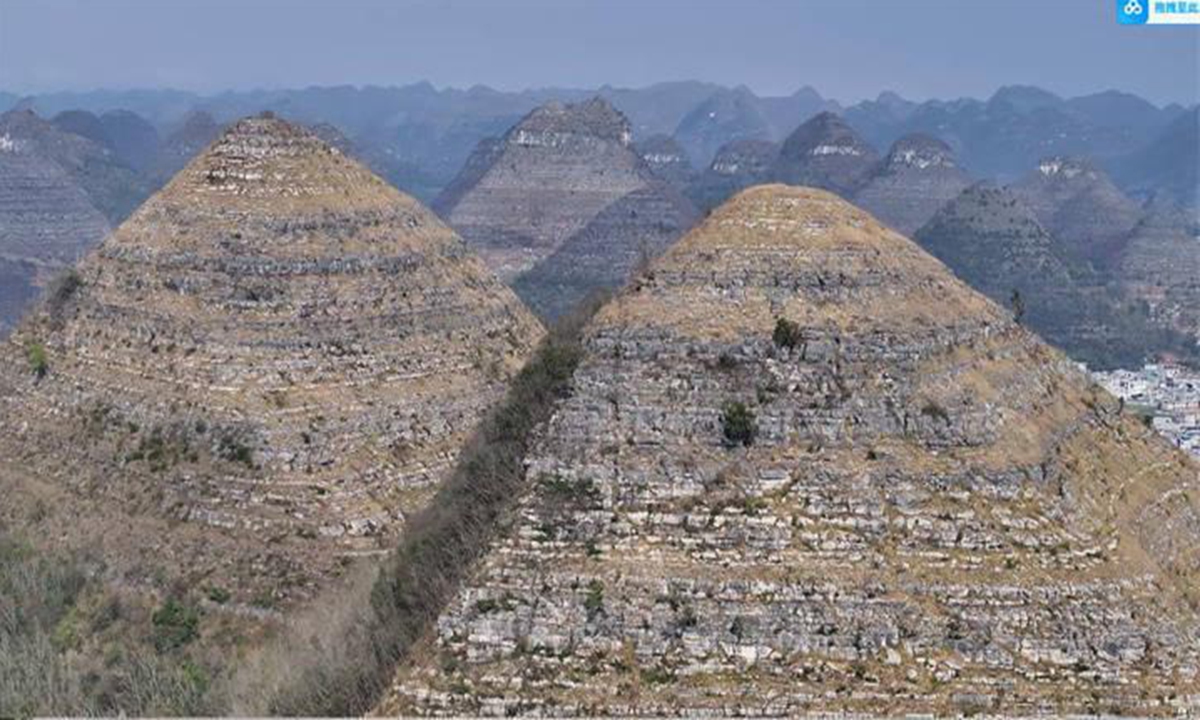
Mountain peaks resembling the shape of "pyramids" in Anlong county, Southwest China's Guizhou Province Photo: Screenshot from news report by Eyes News
The recent discovery of several mountain peaks resembling the shape of "pyramids" in Anlong county, Southwest China's Guizhou Province, have caused a stir on the internet, leaving netizens in awe.
Speculations about the origin of the strange mountain formations have been circulating online, with some suggesting they are prototypes of actual pyramids, while others claim they are natural formations or even ancient tombs. However, experts have weighed in on the matter, urging against over-interpretation.
On March 16, a Chinese media outlet Eyes News interviewed Professor Zhou Qiuwen from the School of Geography and Environmental Science at Guizhou Normal University, regarding the "Anlong pyramids."
Zhou explained that those mountain formations are natural happenings and attributed their pyramid-like shape to the intricate work of nature.
When asked about the layered characteristics of the rocks on the "Anlong pyramids," Zhou clarified that the rocks in Anlong are limestone formations dating back to over 200 million years to the early to middle Triassic ages. Those rocks were formed in a marine environment, with minerals dissolved in water recrystallizing to create the distinct layers seen today due to periodic changes in climate and geology.
Regarding the conical shape of the mountains, Zhou explained that the karst topography of the region, characterized by soluble rocks, undergoes vertical erosion by water, resulting in the formation of independent units from the original rock mass. Continued erosion at the top layers and less erosion at the bottom lead to the sharp peaks and broad bases characteristic of the pyramid shape.
As for the block-like features of the rocks resembling artificial construction, Zhou explained that geological processes in karst landscapes can dissolve layered rocks into smaller blocks, resembling man-made structures. Small cracks within the rocks allow water to slowly erode them, creating segmented block-like formations rather than complete dissolution.
Global Times

